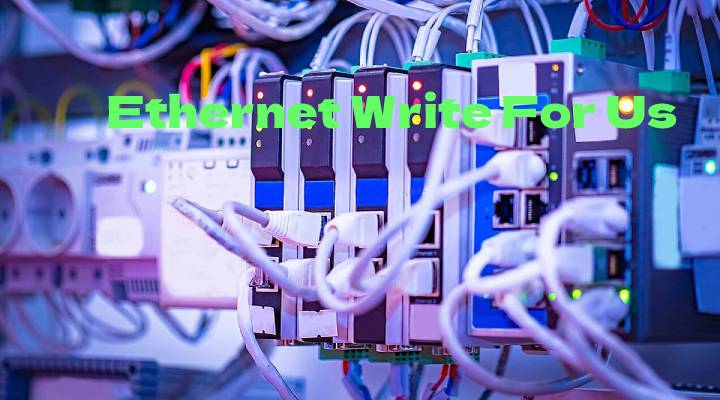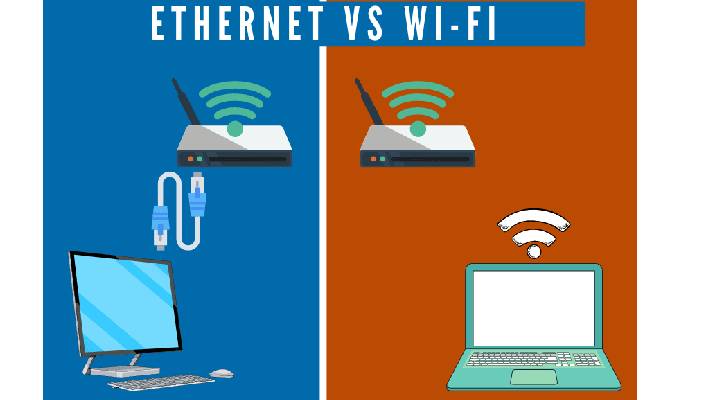Ethernet Write For Us
Ethernet Write For Us – Technically talking, the Institute of Electrical and Electronics Engineers (IEEE) defines Ethernet as the 802.3 protocol. Of course, “Ethernet” is a much easier term to say, and you may have already seen it dozens of times all over the internet.
Aside from specific terminology, the most common type of local area network (LAN) charity today. A LAN, in contrast to a WAN (Wide Area Network) that spans a larger geographical area, is a network of computers connected to a particular extent not very wide (such as an office, a university campus, or even a house particular). You may be reading this while connected to one.
What Ethernet is not at all is a wireless connection. In a world where Wi-Fi connectivity seems to be what defines our connected lives, you may be wondering: at this point do modern laptops include or should they include an Ethernet port? Power users of professional networks as well as lovers of online video games will respond with a resounding “yes, of course; they must include it.” And we are going to explain why below.
Ethernet: speeds, cables, and installation

Because Ethernet has been around since the early 1970s, the first speeds only reached ten megabits per second (Mbps). Later, Fast Ethernet would arrive that would raise these rates to 100 Mbps, and currently, we have Gigabit Ethernet, which reaches 1000 Mbps. Although at this time its use is limited to a handful of leading technology companies, the new standard 10 Gigabit Ethernet up to 10,000 Mbps) is on the way.
As it is a wired connection protocol, the type of Ethernet cable you use is highly relevant to its performance. The most common forms of Ethernet cables are Category 5 (or CAT5). That supports both the old standard and Fast Ethernet, while Category 5e and Category 6 (CAT5e and CAT6) cables can operate on Gigabit and 10 Gigabit Ethernet, respectively.
These cables connect your modem or modem router (gateway) to the Ethernet ports on your Internet-enabled devices, such as computers, laptops, or Smart TVs. If your method does not have a built-in Ethernet port, you may need to use a USB to Ethernet adapter.
Ethernet vs. Wi-Fi: the benefits

Signal stability
Although installing a wired LAN is a bit more expensive and complicated than a WLAN (wireless local area network), it offers some indisputable advantages. For starters, Wi-Fi signals spread via radio frequencies. Suppose you have ever gone through a tunnel while listening to the car radio or have heard the call from the neighbor’s radio on the home stereo. In that case, you will know perfectly well that radio waves are very susceptible to interference. Wi-Fi networks are equally sensitive.
With Ethernet cable connections, interference is not a problem at all. And since many things in your environment can cause interference, from your neighbor’s Wi-Fi signals, your microwave, or a wireless headset, this advantage can be decisive. Without interference, your internet connection is less sensitive to experiencing slowdowns, disconnections, or intermittent connections. It is critical to transfer large media files to a client (or competing in a Call of Duty tournament).
Similarly, the walls of your house will not cause range limitations on the Ethernet network since each device close by cable, so you will not have to divide your bandwidth between the laptop and your PS4.
Flexibility and security
Even if you’re using Ethernet cables, you still have the flexibility to transfer data up to 100 meters from your modem or router. As most routers providing with Ethernet ports, it is difficult to change your installation at home. You can even go for an intermediate solution and connect your gaming console or PC by cables while leaving your tablet and phones connected to the Wi-Fi signal.
For more professional-oriented users, the control and security that Ethernet offers are unrivaled. With a physical connection, you can maintain control over who fond of your network. It not only alleviates the data traffic load for your users but also prevents unwanted security breaches (which can also be dangerous and costly). With Wi-Fi networks reaching beyond the physical limits of your office, your company’s WLAN network is more exposed to potential dangers.
How to Submit Your Articles?
To submit guest posts, please study through the guidelines mentioned below. You can contact us finished the website contact form or at contact@marketing2business.com
Why Write for Marketing2Business – Ethernet Write For Us

- If you write to us, your business is targeted, and the consumer can read your article; you can have huge exposure.
- This will help in building relationships with your beleaguered audience.
- If you write for us, the obvious of your brand and contain worldly.
- Our presence is also on social media, and we share your article on social channels.
- You container link back to your website in the article, which stocks SEO value with your website.
Search Terms Related to Ethernet Write for Us
- Ethernet
- Ethernet cable
- Ethernet port
- Ethernet switch
- Ethernet router
- Ethernet hub
- Ethernet MAC address
- Ethernet IP address
- Ethernet frame
- Ethernet header
- Ethernet trailer
- Ethernet payload
- Ethernet collision
- Ethernet CSMA/CD
- Ethernet CSMA/CA
- Ethernet full-duplex
- Ethernet half-duplex
- Ethernet 10BASE-T
- Ethernet 100BASE-TX
- Ethernet 1000BASE-T
- Ethernet 10GBASE-T
- Ethernet 25GBASE-T
- Ethernet 40GBASE-T
- Ethernet 100GBASE-T
Search Terms for Write For Us
- Ethernet Write for us
- Guest Post Ethernet
- Contribute Ethernet
- Ethernet Submit post
- Submit an article on Ethernet
- Become a guest blogger at Ethernet
- Ethernet writers wanted
- Suggest a post on Ethernet
- Ethernet guest author
Article Guidelines on Marketing2Business – Ethernet Write For Us
- The author cannot be republished their guest post content on any other website.
- Your article or post should be unique, not copied or published anywhere on another website.
- The author cannot be republished their guest post content on any other website.
- You cannot add any affiliates code, advertisements, or referral links are not allowed to add into articles.
- High-quality articles will be published, and poor-quality papers will be rejected.
- An article must be more than 350 words.
- You can send your article to contact@marketing2business.com
Related pages
Accountant Write For Us
Affinity Marketing Write For Us
Air Conditioner Write For Us
Apache Spark Write For Us
Artificial Intelligence Write For Us
Business Finance Write For Us
Business Growth Write For Us
Blockchain Write For Us
Business App Write For Us
Business Finance Write For Us
Chat Rooms Write For Us
Business Tips Write For Us
Business Sites Write For Us
Cryptocurrency Write for Us
Customer Support & Services Write For Us
DOGE Write For Us,
Direct Marketing Write For Us
DevOps Write For Us
Digital Marketing Write For Us
Economic Development Write For Us
Equity Write For Us
Drip Marketing Write For Us
Ethereum Write For Us
Entrepreneur Write For Us
Email Marketing Write For Us


